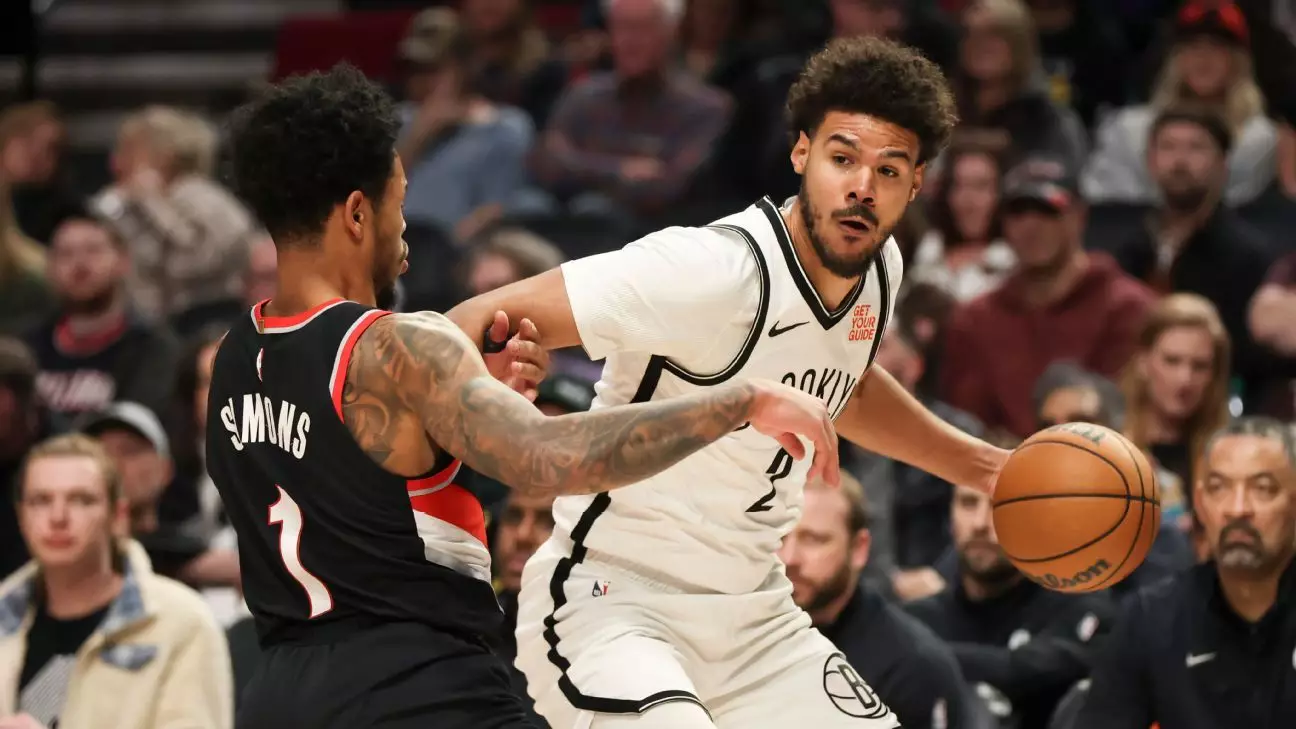In a surprising and aggressive maneuver, the Denver Nuggets have shaken the foundations of their recent success by trading Michael Porter Jr., a player who had become a significant contributor to their championship aspirations. Sending Porter, along with a coveted unprotected 2032 first-round pick, to the Brooklyn Nets in exchange for Cameron Johnson marks a clear statement from Denver’s new front office. This is no cautious tweak; it’s a bold, high-stakes recalibration of the roster that speaks volumes about the shifting philosophy under executives Ben Tenzer and Jon Wallace.
Porter’s departure represents more than just a player swap. It signals a radical departure from loyalty to homegrown talent, especially given Porter’s trajectory and importance during the Nuggets’ recent title run. Statistically, Porter provided the Nuggets with reliable late-game shooting and rebounding — elements that are not easily replaced. Trading him not only sacrifices on-court chemistry but also risks alienating fans who saw him as a cornerstone of Denver’s bright future.
Financial Maneuvering or Short-Sighted Salary Cap Management?
The financial aspect of this trade raises eyebrows. Porter carries a hefty $79.1 million contract over two years, nearly double Cameron Johnson’s combined $44 million salary for the same period. While this might initially appear as a savvy financial redistribution, the unprotected first-round pick included tilts the deal toward added future risk. Denver may be trying to shed some fiscal weight and salary concerns, but dangling a pick without protections against a low outcome window shows a dangerous gamble on the team’s long-term prospects.
The cleverness of this trade hinges on the Nuggets’ belief that Johnson’s breakout scoring abilities at a more manageable salary will generate better on-court value. Johnson’s perimeter shooting and rebounding prowess fit the modern NBA’s direction, but can he match Porter’s playoff poise and the intangible contributions derived from his leadership and history with the roster? Such intangible elements often defy simple statistical metrics but matter greatly in championship-level basketball.
Retention of Intangibles with Bruce Brown’s Return
In a curious but promising counterbalance, the Nuggets decisively re-signed Bruce Brown on a veteran minimum deal. Brown’s locker-room presence and prior championship experience make him a crucial glue player, particularly in a dressing room suddenly altered by upheaval. His return can be seen as a tacit acknowledgment from the new management that team cohesion, spirit, and fit with Nikola Jokic’s style remain priorities amid sweeping roster changes.
Brown’s contribution, both on and off the court, has been undervalued in many discussions. Averaging meaningful points, rebounds, and assists during Denver’s title campaign, his fundamentally sound, versatile style has a way of making stars like Jokic and Murray look even better. Retaining him is a move rooted in stability that contrasts with the high-risk nature of the Porter trade.
Coaching Changes and a Rocky Transition
Adding further complexity to Denver’s narrative is the firing of Michael Malone and GM Calvin Booth late in the 2023-24 season. This leadership shake-up, resulting in David Adelman’s elevation to head coach, underscores a franchise in desperation mode — seeking fresh air and ideas to maximize their championship window with Jokic at the helm. The trade for Johnson and the re-signing of Brown reflect this tension between upheaval and continuity.
The Nuggets hope these moves ignite a new competitive spirit, but with so much changed so quickly, there’s a palpable risk of destabilizing the team’s identity. Fans and analysts alike will be watching closely to see if Denver’s new regime can mold this evolving roster into a genuine contender or if these upheavals only interrupt momentum that built over years.
The Nuggets’ franchise is undeniably at a crossroads, embodying the delicate balance between bold reinvention and the preservation of hard-earned chemistry. The coming months will reveal whether this represents visionary leadership or a costly miscalculation in the high-pressure world of professional basketball.

